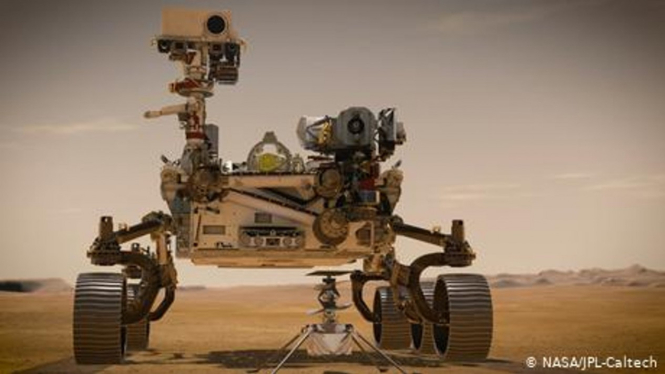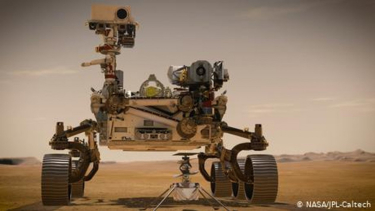- DW/NASA
VIVA – Aliens living on Mars could avoid detection by instruments currently on the planet, scientists say. Probes currently used to hunt for alien life may not be sensitive enough to find such organisms, according to a new paper.
The researchers issued the warning after testing material taken from the Chilean desert, where conditions are somewhat similar to the areas on Mars being studied by the Perseverance rover.
They knew that the area contained ancient life but could not find it using the instruments the rovers carried. Since the Viking missions in the 1970s, many probes have been sent to the red planet in search of microbial life.
So far, the sophisticated instruments on NASA's Curiosity and Perseverance rovers have only identified low levels of simple organic molecules. After that, scientists said these results raise the question about the limitations of current scientific equipment.
An international research team led by Dr. Armando Azua-Bustos of the Astrobiology Centre in Spain tested versions of the instruments that are currently on Mars or due to be sent there soon.
These instruments were tested in Red Stone, which is located in the Atacama Desert in northern Chile. This area is thought to bear a close resemblance to the conditions on Mars and contains an abundance of hematite – an oxidized form of iron that gives Mars its famous red color.
Ilustrasi koloni manusia di Planet Mars.
- SpaceNews
The researchers analyzed samples gathered from the sedimentary fossil remains of a river delta located in the desert.
Moreover, these deposits were thought to have formed under highly arid conditions about 160–100 million years ago and are geologically similar to the Jezero crater on Mars currently being studied by Perseverance.
Analysis revealed several biosignatures, molecules that can be used as evidence for the past or present life. The scientists also found that the Red Stone samples contained numerous microorganisms very difficult to identify, which they call “dark microbiome”.
“We found that in Red Stone there is a variety of microorganisms that are very difficult to classify, so we propose the term dark microbiome which is similar to the dark matter that is estimated to make up an important part of the universe we know that it is there but still resists being identified,” Azua-Bustos said.
Writing in the journal Nature Communications, the researchers said: “Our analyses by testbed instruments that are on, or will be sent to Mars, unveil that although the mineralogy of Red Stone matches that detected by ground-based instruments on the red planet, similarly low levels of organics will be hard, if not impossible to detect in Martian rocks depending on the instrument and technique used.”
Based on their findings, the scientists said more sensitive instruments are needed on Mars, which can be tested in advance in sites like Red Stone. They also added that samples will need to be returned to Earth to conclusively address whether life ever existed on the red planet, as quoted from the Independent site.


























